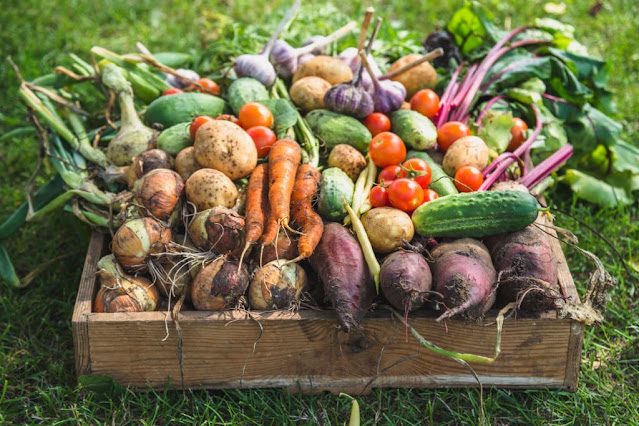Cultivating the Beauty of Traditional Gardening: Types and Tips
The Art of Traditional Gardening: Exploring Types and Expert Tips
Introduction
Traditional gardening has been a beloved pastime for centuries, allowing individuals to connect with nature, cultivate beautiful landscapes, and grow their own fresh produce.
Flower Gardening
Flower gardening is perhaps the most cherished form of traditional gardening. It's all about creating stunning displays of vibrant blooms and fragrant flowers. Here are some key points to consider:
Choosing the Right Flowers: Select flowers that thrive in your region's climate and soil conditions. Common choices include roses, tulips, daisies, and gardenia jasminoides.
Design and Layout: Plan your garden layout carefully, considering factors like color schemes, height variations, and bloom times to ensure a year-round display of colors. These spring gardening ideas can bring new life to your landscape.
Soil Preparation: Amend your soil with organic matter to improve its fertility and drainage. Well-draining soil is essential for healthy flower growth.
Maintenance: Regularly deadhead spent blooms and remove weeds to encourage continuous flowering. Water your flowers consistently and use mulch to retain moisture and suppress weeds.
Vegetable Gardening
Vegetable gardening allows you to cultivate your own fresh, organic produce. Here's how to get started:
Location Matters: Choose a sunny spot in your garden as most vegetables require at least 6-8 hours of sunlight daily. If you're wondering, Is there a green-thumbed guru in my vicinity?" why not reach out to local gardening enthusiasts who can provide invaluable insights into choosing the perfect spots for your plants?
Soil Nurturing: Take the time to investigate and enrich your soil, tailoring it to your plants' unique needs for a flourishing foundation. Vegetables prefer well-draining, nutrient-rich soil. Raised beds can also be a good option for kitchen garden enthusiasts.
Crop Selection: Pick vegetables that you and your family enjoy eating. In-demand options encompass a medley of tastes and textures, with tomatoes, peppers, cucumbers, and lettuce taking center stage among the garden's delectable cast.
Spacing and Planting: Follow recommended spacing guidelines to ensure adequate room for growth. Pay attention to planting depths and follow spacing recommendations on seed packets or plant labels.
Watering and Maintenance: Water consistently to keep the soil evenly moist. Regularly check for pests and diseases, and apply organic remedies when necessary. These tips are essential for a thriving organic gardening experience.
Herb Gardening
Herbs plants are not only aromatic but also provide fresh herbs for cooking and natural remedies. Here's how to create a thriving herb garden:
Herb Selection: Choose herbal plants that you use regularly in your cooking or for medicinal purposes. Common choices include basil, rosemary, mint, and lavender.
Container Gardening: Houseplant shops near me often have a variety of containers suitable for herbs. Use well-draining potting mix and ensure the containers have drainage holes.
Pruning: Regularly trim and harvest herbs to promote bushier growth. This also encourages a continuous supply of fresh herbs for your culinary endeavors.
Overwintering: Some herbs may be perennial and survive through the winter. Others can be brought indoors or replanted each year.
Ornamental Gardening
Ornamental gardening is all about creating visually pleasing landscapes using a variety of plants, including trees, shrubs, and flowers. Here are some tips:
Theme and Style: Decide on a theme or style for your ornamental garden, such as English cottage, Japanese Zen, or tropical paradise. Thoughtful garden landscaping can elevate your outdoor space.
Plant Selection: Choose plants that fit your theme and thrive in your climate. Pay attention to colors, shapes, and textures for a harmonious design that embodies your home garden ideas.
Layout and Hardscaping: Incorporate paths, patios, and decorative elements like sculptures or fountains to enhance the garden's aesthetics.
Seasonal Interest: Plan for year-round beauty by selecting plants with varying bloom times and foliage colors. Don't forget to consider garden maintenance near me for expert assistance in keeping your ornamental garden pristine.
Conclusion
Traditional gardening offers a wealth of opportunities to connect with nature, beautify your surroundings, and enjoy the fruits of your labor. Whether you're drawn to the elegance of flower gardening, the practicality of vegetable gardening, the versatility of herb gardening, or the aesthetics of ornamental gardening, each type brings its own unique joys and challenges. With the right knowledge and a little TLC, you can cultivate a garden that brings you joy and satisfaction throughout the seasons. Happy gardening!









0 Comments